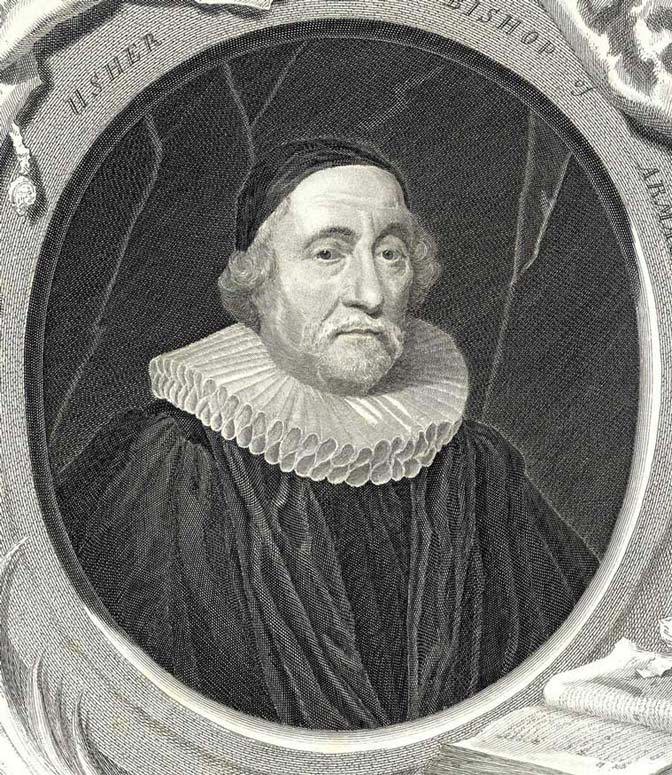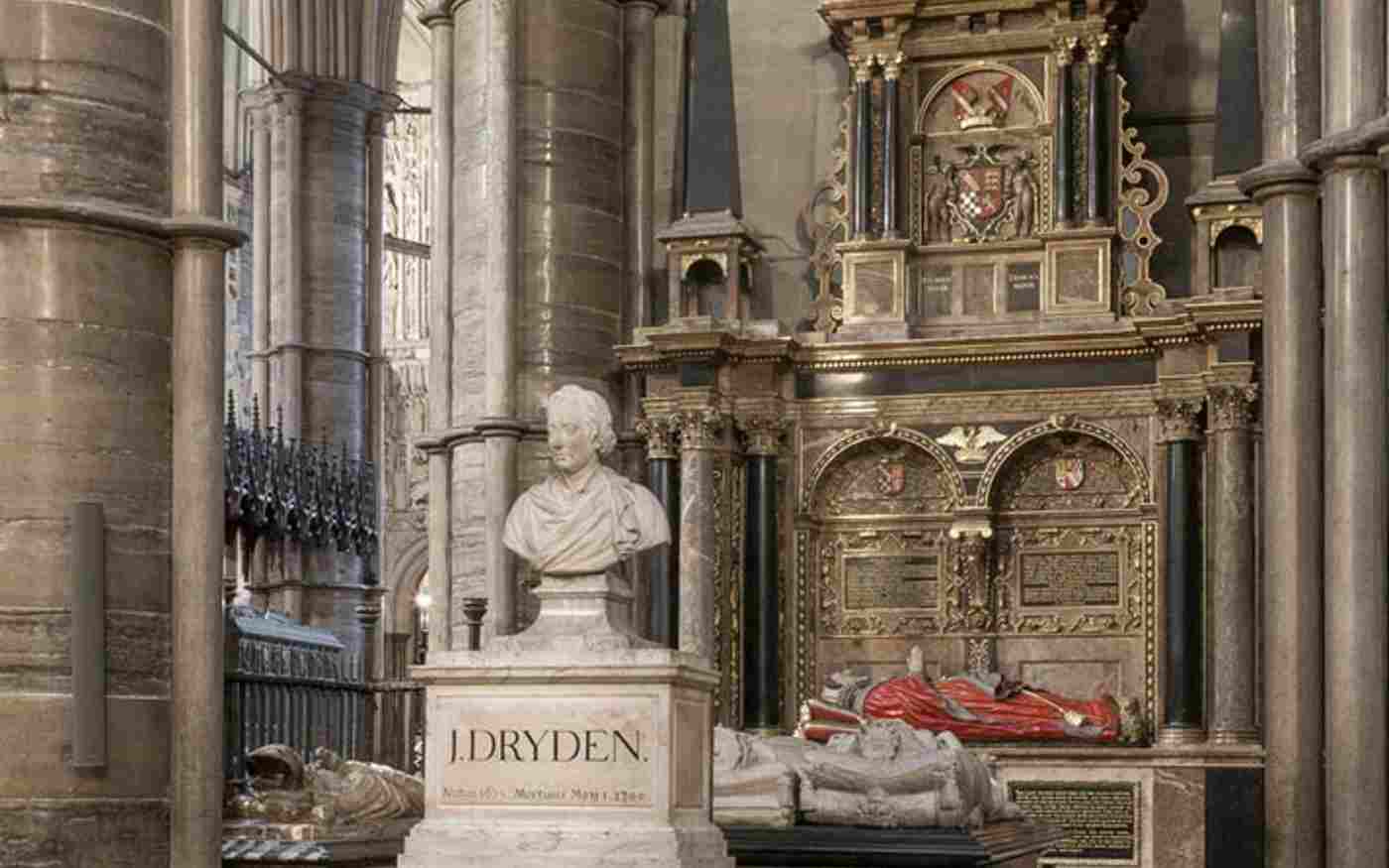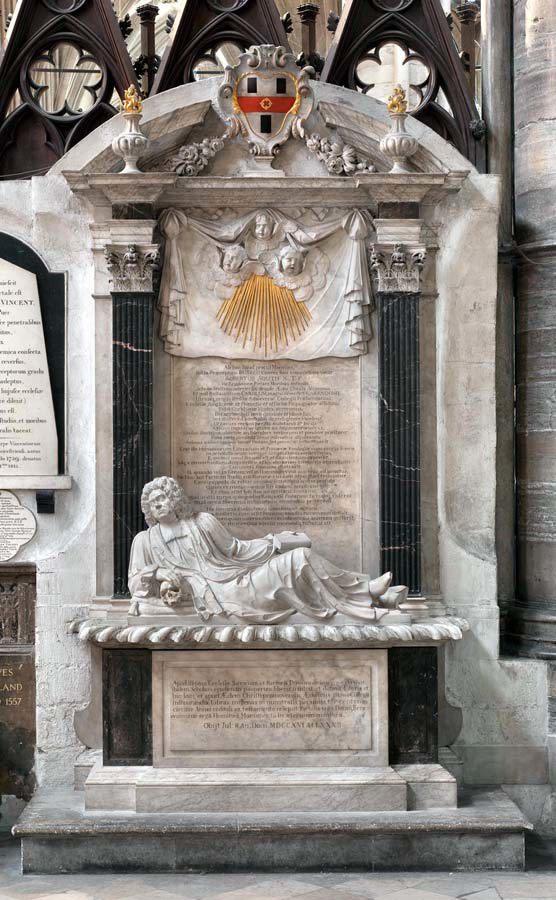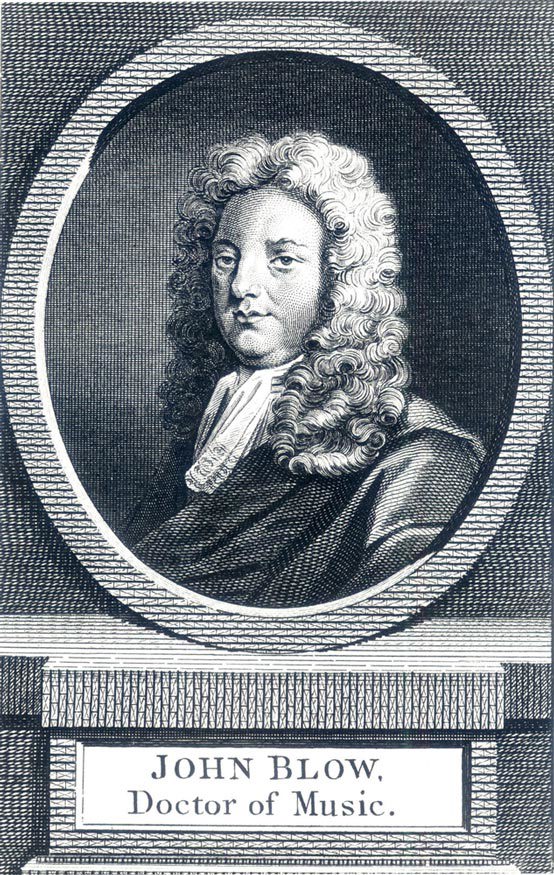Peter Heylyn
Dr Peter Heylyn (or Heylin), churchman, historian and poet, was buried near the stall he occupied in Westminster Abbey. His black marble tablet in an alabaster frame is in the north choir aisle and the inscription was composed by the Dean of Westminster, John Earle. The Latin can be translated as:
Near this place lies the mortal part of Peter Heylyn, D.D., Sub-Dean and Prebendary of this Church. A man truly memorable, endued with excellent qualifications, and with a memory surprisingly retentive, to which he added an unwearied application to studies, which ceased not after his sight was decayed. He wrote much on various subjects, which are now public, and delivered very uncommon arguments, in a very curious style; in all which he shewed himself a strict asserter of the church and monarchy, no less in their afflicted than flourishing estate, and at the same time a bold antagonist against the rebellious and schismatic factions: despising their envy, with an undaunted resolution. While he intended more of the same nature, death imposed silence on him, unable to silence his memory. He died, aged 63, on 8 May 1662. His afflicted wife erected this monument
Above is his coat of arms "sable, three nags heads erased, argent" (a black shield with three silver horses' heads). The monument has been cut down. Originally it had a more elaborate border and another coat of arms at the base showing Heylyn impaling Highgate, as well as a smaller tablet containing the beginning of the inscription. It was moved one bay further east when Archbishop Agar's monument was erected in 1815.
He was born at Burford in Oxfordshire on 29th November 1599, a son of Henry Heylyn and his wife Elizabeth (Clampard). He was educated at Burford and Oxford university, where he lectured on historical geography and was elected a fellow of Magdalen college. On 28th October 1628 he married Letitia Highgate (or Heygate), whose elder sister had married Peter's brother. Only four of their eleven children survived their father ie. Thomas, Henry, Elizabeth and Letitia who married the Rev. John Barnard. Peter was author of a Life of Archbishop Laud, whose chaplain he was. He was appointed a prebendary of Westminster in 1631 and spoke against Dean John Williams from the Abbey pulpit. After Williams' imprisonment he became supreme authority at the Abbey and superintended repairs. During the Civil War he was stripped of his property and went into hiding but returned to his post at the Restoration in 1660. In accordance with a dream he had before his last illness, he was buried close to, or beneath, his stall in the choir. In the dream King Charles I had stood before him and said 'Peter, I will have you buried under your own seat in church, for you are rarely seen but there or at your study'. His widow lived in the Abbey Almonry and was buried in the Abbey on 17th March 1668.
In 1759 the Reverend Dr John Heylyn, prebendary of Westminster from 1743, was buried in the south transept of the Abbey. It is not known if he was a relation of Peter.
Further reading
Life of Peter Heylyn by George Vernon, 1682
"Theologo-Historicus or the true life of Peter Heylyn" by J. Barnard, 1683
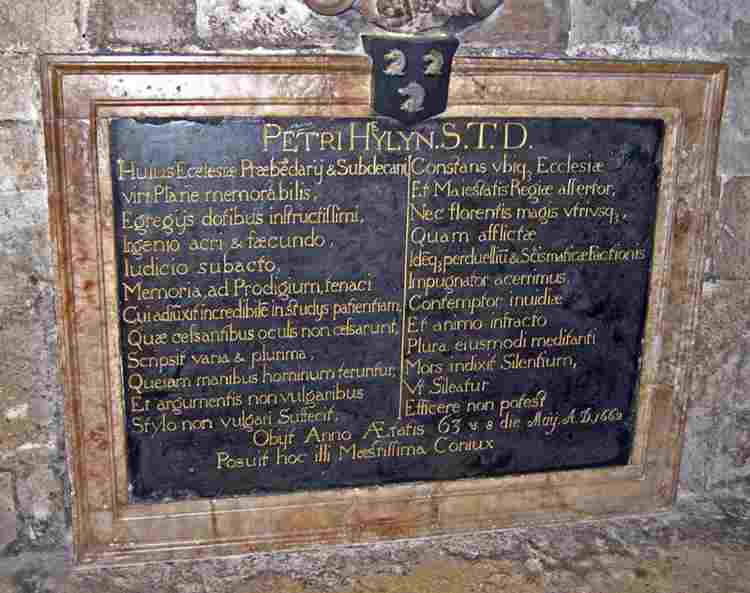
This image can be purchased from Westminster Abbey Library
Image © 2025 Dean and Chapter of Westminster

